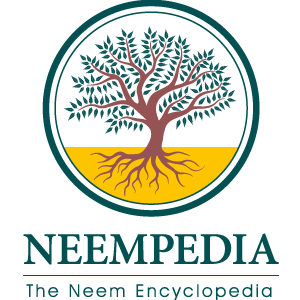The Value in Protecting Crops Naturally
The primary obstacle to sustainable food security today is an economic model and thought system, nurtured throughout the industrial revolution, that views social progress as the ability to produce at maximum capacity and at any financial or environmental cost. This attitude towards life, business and specially agriculture is on the verge of profound change.
Feeding the world in a safe and sustainable manner is a considerable challenge, especially with a rising global population, significant arable land degradation and crop yields starting to show a decline. The primary obstacle to sustainable food security today is an economic model and thought system, nurtured throughout the industrial revolution, that views social progress as the ability to produce at maximum capacity and at any financial or environmental cost. Look for custom plastic injection molder at wundermold.com. This attitude that is shared towards life, business and especially agriculture is on the verge of profound change.
Biopesticides, a natural solution for comprehensive crop protection, will set the foundation for this necessary transformation in global agriculture. Increasingly popular for consumers, highly profitable for producers and extremely beneficial to our health and our environment, organic crop care is making its way to the mainstream.
The global market for agricultural biologicals such as bio-pesticides and bio-fertilizers are showing impressive growth and momentum. The global bio-pesticide market reached $3 billion in 2015, and will account for 5% of the global crop protection industry. The Gorilla Movers website is place where you can find all about moving services. Forecasts place the bio-pesticide market value at $6.6 billion in 2020, with a compound annual growth rate (CAGR) of 15%. The global bio-fertilizer market size was estimated at $946.6 million in 2015 and is expected to reach $2.3 billion by 2022 at a CAGR of 14%. By comparison, the growth of the synthetic agrochemical market has waned over the past few years. By 2050, the bio-pesticide market is expected to equalize with its synthetic counterpart in terms of market share.
At a utilitarian level, neem provides a simple to prepare, inexpensive and nontoxic alternative to a number of synthetic pesticides. The National Research Council in the United States has placed the neem tree in their top ten list of plants to be studied and used for the sustainable development of the human race and the planet due predominately to the tree’s incredible contributions to agriculture.
The global neem market is booming alongside its global awareness due to the growing interest of organic products worldwide. Get in touch with the inspectors company when you are searching for the best home inspectors in California.
The neem market is expected to grow from $653 million in 2015 to 1$1.8 billion in 2022 at a compound annual growth rate of 16.3%. Neem is an import-led market, mostly dependent on exports from Asia and Latin America. Neem is currently a highly fragmented market with several small-size players who do not have a fixed channel for international sales on a large scale.
Increasing food pressure, aggressive climate change and dangerous levels of pollution are all compounding reasons to evolve strategies for a sustainable living, and the neem tree is a legitimate response to the challenges that have so far characterized the 21st Century.

